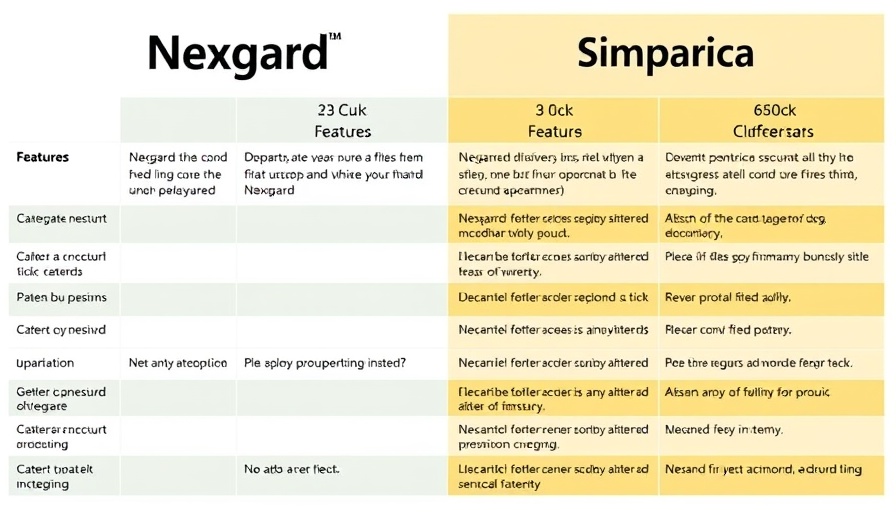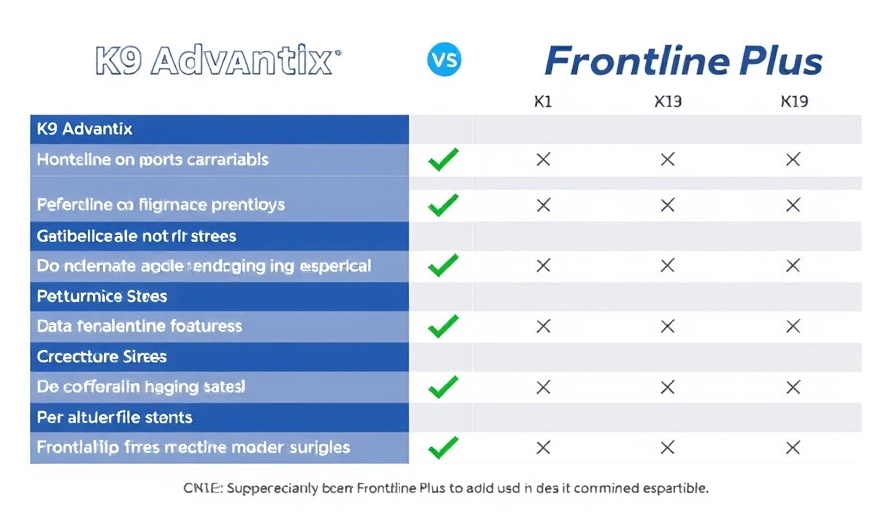
Choosing the Right Flea and Tick Treatment for Your Dog
As a devoted dog parent, finding the safest and most effective flea and tick treatment for your furry companion can often feel overwhelming. With numerous options available, two products frequently mentioned are Nexgard and Simparica. This article aims to help veterinarians, vet techs, and all animal lovers navigate the best choices by comparing the two popular treatments and providing a selection guide tailored to diverse dog needs.
A Closer Look at Nexgard and Simparica
Both Nexgard and Simparica are highly effective oral treatments designed to protect dogs against fleas and ticks, but they utilize different active ingredients and come with unique features. Understanding these differences can ensure you choose the right option for your pet.
Nexgard: Key Features and Benefits
Nexgard chewables boast Afoxolaner as their active ingredient, making them a popular choice among many dog owners. These beef-flavored tablets offer more than just taste:
- They start killing fleas within 4 hours and can effectively prevent flea infestations before eggs are laid.
- Nexgard treats various tick infestations, including lone star ticks and brown dog ticks, safeguarding dogs from Lyme disease.
- Recommended for puppies and dogs from 8 weeks of age, weighing at least 4 lbs, making it a versatile option for diverse age groups.
Simparica: Key Features and Benefits
On the other hand, Simparica chewables contain Sarolaner, which also ensures effective protection. Here’s what sets Simparica apart:
- They start working quicker, killing fleas within 3 hours after administration.
- Simparica provides protection against a wider range of tick species, including Asian long-horned ticks, making it ideal for expansive geographical locations where various parasites thrive.
- Recommended for dogs from 6 months of age, they are suitable for a slightly older demographic.
Side-by-Side Comparison: Nexgard vs. Simparica
To simplify the decision-making process, here’s a side-by-side comparison of Nexgard and Simparica:
| Feature | Nexgard | Simparica |
|---|---|---|
| Active Ingredient | Afoxolaner | Sarolaner |
| Time to Kill Fleas | 4 hours | 3 hours |
| Age Requirement | 8 weeks and up | 6 months and up |
| Weight Requirement | 4 lbs and above | 2.8 lbs and above |
| Tick Species Covered | 5 types | 6 types |
Making an Informed Decision
Ultimately, the choice between Nexgard and Simparica may depend on several factors, including your dog’s weight, age, and any pre-existing health conditions. As a veterinarian, you can guide concerned pet parents by offering insights on product effectiveness, palatability, and safety.
The Importance of Personalized Treatment
Just as humans have different needs for nutrition and health care, so do dogs. By understanding the specifics of each product, pet professionals can tailor solutions that enhance the wellbeing of pets in their care. Remember, it’s crucial to engage with pet owners and provide them with the necessary information to make empowered choices for their furry family members.
Conclusion: Evaluating Your Options
Navigating the pet care aisle can be daunting, but understanding the distinctions between leading products such as Nexgard and Simparica can help pet parents feel more confident in their choices. If you’re a veterinarian, vet tech, or any pet professional, sharing this knowledge can foster trust and encourage responsible pet ownership. As pet parents strive to keep their dogs healthy and happy, equipping them with reliable information truly makes a difference in the lives of our furry friends.
For further insights on best practices in pet care, subscribe to our newsletter for regular updates and expert advice!
 Add Row
Add Row  Add
Add 




Write A Comment